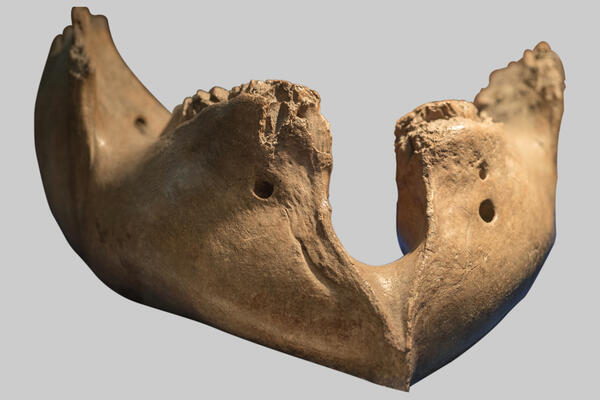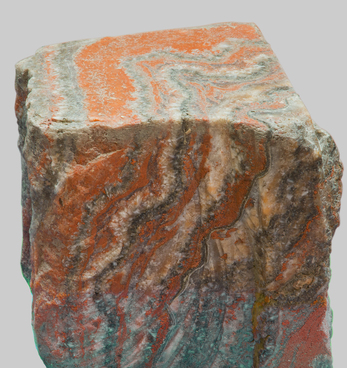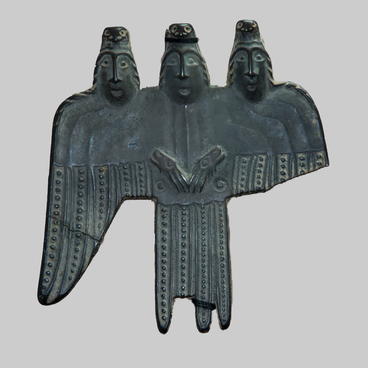The lower jaw of a steppe mammoth was found in 1953 while fishing by pupils of the 9th grade of the PYskor school of the UsOlye district. The jaw was half exposed from the ground - probably, the spring collapse of the bank of the PYskorka River, which flows into the Kama, was behind this finding.
The steppe mammoth is an extinct species of the genus mammoths of the elephant family. Steppe mammoths lived in Northern Eurasia about 800-200 thousand years ago. They are considered the ancestors of woolly mammoths, which appeared on the territory of northern Siberia about 300-250 thousand years ago and completely supplanted their predecessors after a short transition period.
Scientists know much less about the lifestyle and appearance of these animals than about their descendants, woolly mammoths. It is known that steppe mammoths were also adapted to life in cold regions thanks to their thick wool.
In addition, they were the largest representatives of the proboscis of all time - they could reach more than four meters in height, and their weight reached ten tons. For comparison, the height of an adult male woolly mammoth is up to 3.5 meters, which is not much more than modern Asian elephants, and the weight is no more than eight tons.
The ancestors of mammoths are the southern elephants - archidescodons. It is not known what the southern elephants looked like, but most likely they were not covered with wool, because they lived in a warmer climate. In the Upper Pleistocene, the steppe mammoth, apparently, separated from its ancestor, and in the Middle Pleistocene, from 750 to 500 thousand years ago, displaced it.
Scientists determine the type of mammoths by the structure of their upper and lower teeth. In the process of evolution, the living conditions of animals changed. Mammoths adapted to the cold and dry climate and new food - grass and shrubs. In order to efficiently grind plant fibers, the number of tooth plates in steppe elephants gradually increased, and the plates themselves became high, which compensated for their rapid erasure on tough grass.
Due to the fact that the steppe mammoths were better adapted to feeding on grasses in the south, they penetrated deep into the steppe regions. However, their range extended to wooded areas, as evidenced by finds in the peat layers of eastern England, where the remains of forest plants were also found.
The steppe mammoth is an extinct species of the genus mammoths of the elephant family. Steppe mammoths lived in Northern Eurasia about 800-200 thousand years ago. They are considered the ancestors of woolly mammoths, which appeared on the territory of northern Siberia about 300-250 thousand years ago and completely supplanted their predecessors after a short transition period.
Scientists know much less about the lifestyle and appearance of these animals than about their descendants, woolly mammoths. It is known that steppe mammoths were also adapted to life in cold regions thanks to their thick wool.
In addition, they were the largest representatives of the proboscis of all time - they could reach more than four meters in height, and their weight reached ten tons. For comparison, the height of an adult male woolly mammoth is up to 3.5 meters, which is not much more than modern Asian elephants, and the weight is no more than eight tons.
The ancestors of mammoths are the southern elephants - archidescodons. It is not known what the southern elephants looked like, but most likely they were not covered with wool, because they lived in a warmer climate. In the Upper Pleistocene, the steppe mammoth, apparently, separated from its ancestor, and in the Middle Pleistocene, from 750 to 500 thousand years ago, displaced it.
Scientists determine the type of mammoths by the structure of their upper and lower teeth. In the process of evolution, the living conditions of animals changed. Mammoths adapted to the cold and dry climate and new food - grass and shrubs. In order to efficiently grind plant fibers, the number of tooth plates in steppe elephants gradually increased, and the plates themselves became high, which compensated for their rapid erasure on tough grass.
Due to the fact that the steppe mammoths were better adapted to feeding on grasses in the south, they penetrated deep into the steppe regions. However, their range extended to wooded areas, as evidenced by finds in the peat layers of eastern England, where the remains of forest plants were also found.



